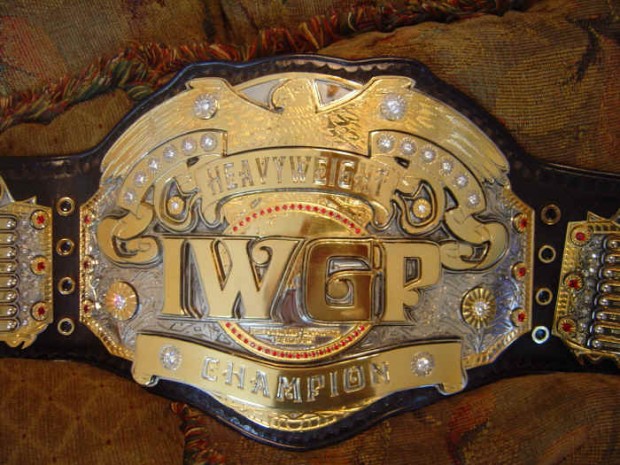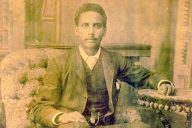Over in Japan, there’s been a legendary series of matches that have heralded a new golden age of pro wrestling. Dan Steadman takes a look.
It’s hard to become a legend if you don’t have a worthy adversary – David would have been nothing without Goliath; Luke Skywalker needed Darth Vader; Batman has faced off against The Joker countless times.
And so it is with the unique art form that is professional wrestling – Hulk Hogan was always going to be a star, but without the charisma of both “Rowdy” Roddy Piper and Randy “Macho Man” Savage for him to battle against, he might not have birthed the modern era of pro wrestling. “Stone Cold” Steve Austin took that theory to the logical extreme – his biggest nemesis wasn’t actually The Rock, but WWE (nee WWF) owner Vince McMahon. You could argue that the lack of a defining enemy is why WWE megastar John Cena is not truly exalted by fans and critics alike.
But over in Japan, the #1 promotion in the country, New Japan Pro Wrestling (NJPW) has found its legend-making pairing, creating not only an incredible series of matches, but also becoming the catalyst for the promotion’s resurgence.
On one hand you’ve got Hiroshi Tanahashi – six-time champion of the promotion, sporting an almost visual kei-style rock star gimmick, and one of the most reliable big event performers in wrestling for the last decade. His opponent – the current IWGP (International Wrestling Grand Prix) champion Kazuchika Okada, who with his playboy-esque gimmick enjoyed a meteoric rise in 2012.
Like the best feuds, each wrestler on their own would have been a star, but put them together and you have the potential to create a legend. Where this gets interesting, however, is that at the beginning of the feud, it seemed like Tanahashi would be the beneficiary. He was already a main event player, and had been for years, and Okada seemed like just another stepping stone towards cementing his legacy.
But this was a more considered storyline, and typically for the more understated Japanese style (at least when it comes to narrative development if not always in other areas), it’s a feud based on the notion that the champion is the man that everyone wants to challenge. While Tanahashi is notionally the good guy, and Okada the baddie, this isn’t as immediately apparent as in US wrestling – there’s no overt display of bad behaviour from Okada, nor does Tanahashi pander to the crowd quite like a Hogan or Cena. Instead, this feud is about two men wanting to be the best, and it shows in every match.
The first match (12/2/2012) saw Okada challenge Tanahashi for the IWGP, having only returned to the promotion a month prior (following an ill-advised stint in US #2 promotion, TNA – Tanahashi also had a similarly underwhelming run with the company), and coming off a relatively unimpressive win at NJPW’s biggest event of the year. Conventional wisdom would see Tanahashi see off the upstart; instead Okada won the title in a fantastic match, an early sign that NJPW wasn’t going to run your normal storyline here.
The rematch (16/6/2012) resulted in Tanahashi regaining the title, a move that was expected – putting into fans’ minds that Okada was a bit of a fluke champion, despite a truly epic encounter against Tetsuya Naito in his first title defence. From that, Okada moved out of the main event picture for a stretch, again hinting that the feud was over.
Of course, it wasn’t. Following Okada’s win in the annual G1 Climax tournament (one of the biggest months in the NJPW calendar) he was back in the main event for the biggest event of the year, Wresting Kingdom. The match (4/1/2013) lived up to the high expectations, but again it was Tanahashi who was given the win. While this feud had gone on for almost a year, we’d only had three matches; there was no risk of burning out your audience (something that US promotions risk on a regular basis), and fans were clamouring for the next episode.
They didn’t have to wait long, with the fourth match occurring at Invasion Attack (7/4/2013). Like all their previous matches, this was another epic encounter (most considered this to be the best they’d had thus far), with Okada getting the win to start his second reign as champion.
The next time they met (10/08/2013) was at the 2013 G1 Climax tournament, meaning Okada’s championship wasn’t on the line. They’d already had seven matches each in the tournament, and both had a 4-3 record, so it was a stroke of genius for them to have the only time limit draw of the tournament – a tournament neither of them ended up winning.
(Tetsuya Naito, the man Okada had his first ever title defence against won the tournament, another creative masterstroke.)
And just last month (14/10/2013), they had their sixth match – both had two wins over the other, plus that draw. The conventional wisdom was that Tanahashi would win, so NJPW’s biggest star would have the championship going into their biggest event, coming up on 4 January next year.
Instead Okada retained the championship to position himself as the biggest star in the promotion, and perhaps the man to carry Japanese wrestling for the rest of the decade.
Old school wrestling fans look back at the three-match feud between Ric Flair and Ricky Steamboat from 1989 for the NWA championship as being perhaps the best complete series of matches.
Tanahashi and Okada may have just eclipsed them.
And it’s interesting, as while they’ve delivered a set of state of the art matches, there’s something very old school about the feud – each match builds on the last, combining to create a cohesive storyline. Stylistically, there’s not much difference between the two; Okada might be more of a power wrestler, while Tanahashi might be more of a high flyer, but their similarities are greater in number than their differences.
So where to now? Tanahashi will compete against New Japan’s Intercontinental Champion (the 2nd tier championship) Shinsuke Nakamura at January’s Wrestle Kingdom 8 show, keeping him away from the main event for a little while. Meanwhile Okada will headline the show against Naito.
Interestingly, the fans seem to have turned against Naito, as they perceive him to be on a lower rung than Okada; with a bit of luck, that could be the motivation needed to deliver another classic match.
It’s exciting times indeed in New Japan.
















